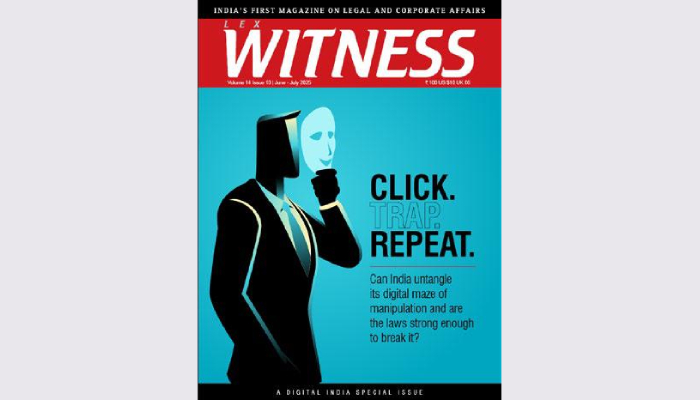
or

“Berkshire Hathaway Inc. held its 2020 annual meeting of shareholders as a livestream-only event originating from its headquarters city of Omaha, Nebraska on May 2. In stark contrast to the 2019 meeting, when a record 40,000 visitors attended, this year social distancing orders sparked by the COVID-19 coronavirus crisis limited in-person participants to 89-year-old Chairman and CEO Warren Buffett and 57-year-old Vice Chairman of Non-Insurance Business Operations Greg Abel, plus several other employees who assisted in running the meeting”
“We are now getting ready for a virtual AGM” Sanjiv Mehta, CEO & MD, Hindustan Unilever (Excerpt from an Interview with Jefferies, dated 29th May 2020)
“Necessity is the mother of invention” – Holding virtual AGM’s or e-AGM’s is the new way to conduct shareholder meetings and will not only be a legal mandate but also a necessity that will continue in 2020 & beyond for all shareholders meetings. In India, shareholder meetings are by nature, a grand event in itself, held once in a year serving as a sole platform for the shareholders to question the board, celebrate success, to be informed on key strategic decisions of the company, to approve mandatory resolutions and most importantly the chance to interact face to face with the board of directors of the Company. Shareholders look forward to such a yearly physical event with zeal and anticipation.
Shareholders are the owners of the company and under the Companies Act, 2013 and rules framed thereunder, are vested with the sole authority to vote and decide upon certain key matters after the Board of directors have accorded their approval and recommendation. Shareholders meeting in India and abroad are typically attended in person by millions of shareholders- the annual general meeting of Reliance Industries is one such example in India and Berkshire Hathaway Inc, USA is an international example attended last year by 40,000 shareholders.
As with other business activities, the spread of COVID-19 pandemic and the resulting restriction on travel, meeting and social distancing, various representations were made before the Ministry of Corporate Affairs (MCA) seeking relaxation in the provisions related with general meeting since several ordinary and special resolutions were pending for approval from members. In response to this, MCA for the first time paved the way for concept of e-general meeting by allowing all companies to hold their Extra-Ordinary General Meeting (EGM) through video conferencing (VC) or other audio-visual means (OAVM) vide their circular dated 8th April, 20203. The MCA thereafter also allowed all companies to hold e-Annual General Meeting (e-AGM) for the calendar year 2020 vide their circular dated 13th April, 2020.
The Companies Act, 2013 (the Act) and rules made thereunder mandate physical meetings and do not enumerate any provisions for holding e-general meetings. However, certain provisions of the Act provide for e-voting and postal ballot for certain resolutions, apart from ordinary business, of certain class of companies to facilitate the meetings for shareholders who are not located near the registered office of the Company. The chapter VII of Act, titled “Management and Administration” the Companies (Management and Administration) Rules, 2014 (the Rules) deal with physical shareholders’ meetings.
Section 96 contains provisions relating to AGM prescribing the norms for deciding the day, time and place for holding AGM, minimum gap between two AGM’s, etc. Section 96 clearly states that every annual general meeting shall be called during business hours but not on a National Holiday and shall be held either at the registered office of the company or at some other place within the city, town or village in which the registered office of the company is situated.
Section 100 deals with EGM and its procedure. Section 101 provides the procedure for sending notice calling general meetings, which shall not be less than 21 clear days’ notice. Further section 102 to 110 deals with various matters related with AGM/EGM such as explanatory statement, quorum, Chairman, proxy forms, voting including e-voting, postal ballot and so on.
Keeping in view the challenges being faced by the companies and its different stakeholders in finalization of yearly accounts and also on the logistics to hold physical shareholder meetings, the MCA acted promptly and issued the cited circulars to enable companies to plan and hold their general meetings virtually. The MCA had in anticipation of the challenges faced by the companies, had already extended the period of holding of AGM of those companies whose financial year ended on 31st December, 2019 till 30th September, 2020.
MCA issued the first General Circular on 8th April, 2020 (EGM Circular- I) for passing pending ordinary and special resolutions, which were urgent in nature. It also directed the passing of resolutions through mechanism of postal ballot/evoting without holding a general meeting, which requires physical presence of members at a common venue. However, MCA allowed companies to hold e-EGM, if it is considered unavoidable by following the procedure given in the circular for conducting such a meeting on or before 30th June, 2020, in addition to any other requirement provided in the Act.
It is to be noted that the circular broadly divides the companies in two categories.
For Companies, which are required to provide facility of e-voting under the Act, or any other company which has opted for such facility.
This category is meant for the companies which are mandatorily required to give e-voting under rule 20, which includes all listed companies and other companies who have not less than 1000 shareholders (known as widely held public limited companies) and other small companies.
For Companies, which are not required to provide facility of e-voting under the Act.
This category is meant for those companies where neither e-voting is compulsory, nor they opt for e-voting. In simple words, private limited companies, where shareholders can’t cross 200 limit and closely held public limited companies, whose number of shareholders are less than 1000.
In the “Category – A”, listed companies along with largely held unlisted public companies are broadly covered. In this category, the legal requirements when an e-EGM is required to be held are:
“Category – B” is intended for closely held public limited company and private limited company, where all procedures for holding EGM through VC/OAVM are similar to category -A companies, except for certain conditions arising due to nonrequirement of e-voting facility. Since this category covers those companies, which are not required to provide e-voting, hence, voting through email addresses have been introduced. In the category:
In the EGM Circular dated 8th April, 2020 – there were a few questions left unanswered, and to fill this gap, MCA issued another circular on 13th April, 2020 (EGM Circular- II) clarifying on serving and receiving notice of such meetings since postal services have been disrupted due to the lockdown. These changes can be further categorized in the two categories:
However, simply enabling virtual EGM’s would not serve the purpose as the main concern of the shareholders was on holding of AGM’s. To obviate this difficulty, MCA issued another general circular on 5th May, 20205 allowing e-AGM’s. It retains the basic framework for e-EGM’s, enumerated in earlier circulars and continues with the bifurcation of companies in categories A and B.
For “Category -A” companies, the framework provided in EGM Circular – I and the manner and mode of issuing notices provided in EGM Circular – II shall be applicable mutatis mutandis for conducting the e-AGM. In such meetings, other than ordinary business, only those items of special business, which are unavoidable, may be transacted.
What is distinct to e-AGM’s are the following additional requirements:
For “Category – B” companies, AGM through VC/OAVM has been now permitted, if they have in their record, email address of the at least half of the shareholders, who;
Further, the Company is also required to take all necessary steps to register email addresses of all the shareholders. In the event, the details of any member are not available or could not be obtained, then the company is required to issue a public notice containing information as specified.
Apart from the above, all other requirements are similar to category A companies.
Companies which are unable to hold general meeting in accordance with the framework provided in the circulars, they can file application for extension of AGM at suitable point of time before the Registrar of Companies.
Conducting business meetings and now shareholder meetings virtually will be the new normal going forward. It is expected that the requirement of having virtual meetings, even after the pandemic has subsided will remain on account of its distinct advantages. A key question remains- will virtual shareholder meeting become a permanent feature in coming years? Well, it seems virtual meetings are here to stay, but they cannot totally obliterate the role of physical meetings and it is expected that a hybrid model will be the new norm. Only time will tell us- how effective virtual meetings are in furthering the role and expectation of our diverse shareholders in India.
Nitin Mittal is currently a General Counsel for India/Pacific Region, Company Secretary and Region Systems & Services for Signify and part of South Asia/ Pacific Leadership team. He has rich and diverse experience of around 18 years in all areas of legal (also litigation), compliance, governance, risk management, and leading teams. As part of the regional team at Signify, he actively works on and leads projects and assignments having regional and international impact. He has travelled for work to several countries giving him insight into diverse cultures and practices. In addition to his professional passion, Nitin is also an ardent reader on both fiction and nonfiction and is equally passionate about expressing his views by publishing articles on various contemporary & intricate topics.
Harvinder Kumar is Manager - Compliance & Governance Signify Innovations India (earlier Philips Lighting) with over 8 years of experience. Prior to Signify, he was associated with Berger Paints Group as Asstt. Company Secretary. He is qualified Company Secretary, Law graduate and an MBA in finance. In his spare time, he enjoys reading books on social and cultural history.

Gunjan Bhatter

Lex Witness Bureau

Lex Witness Bureau

For over 10 years, since its inception in 2009 as a monthly, Lex Witness has become India’s most credible platform for the legal luminaries to opine, comment and share their views. more...
Connect Us:


The Grand Masters - A Corporate Counsel Legal Best Practices Summit Series
www.grandmasters.in | 8 Years & Counting
The Real Estate & Construction Legal Summit
www.rcls.in | 8 Years & Counting
The Information Technology Legal Summit
www.itlegalsummit.com | 8 Years & Counting
The Banking & Finance Legal Summit
www.bfls.in | 8 Years & Counting
The Media, Advertising and Entertainment Legal Summit
www.maels.in | 8 Years & Counting
The Pharma Legal & Compliance Summit
www.plcs.co.in | 8 Years & Counting
We at Lex Witness strategically assist firms in reaching out to the relevant audience sets through various knowledge sharing initiatives. Here are some more info decks for you to know us better.
Copyright © 2020 Lex Witness - India's 1st Magazine on Legal & Corporate Affairs Rights of Admission Reserved